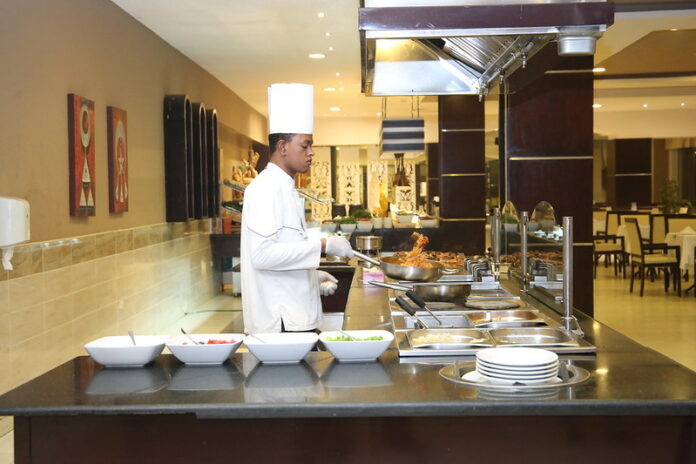
The COVID-19, or the Novel Corona Virus, potentially lethal as it has proved, has transformed the way business is conducted all over. Taking the world by storm, it has taken the lives of close to 1.2 million people across the world (at the time of writing this piece). Not just this, it has brought businesses to a screeching halt, as the world economy had been at the receiving end. Industry sectors including manufacturing, travel & tourism, entertainment and food and hospitality are among the worst hit sectors. As for the food industry, restaurants remained shut for an indefinite period. Hotels ceased to operate due to the rapid spread of virus through contact. COVID-19 started to spread its deadly tentacles as lockdown after lockdowns imposed all over the world disrupted day-to-day activities. Staying indoors became the new norm. Economy crippled due to business inertia. Travel remained a distant dream until lockdowns were relaxed.
COVID-19 and beyond
Safety accessories including face masks and hand gloves became commonplace. The use of sanitizers and personal hygiene were never felt so important than ever to contain the spread of the virus. Social distancing only delayed the inevitable, but was required to check the pandemic at different levels. Fear has gripped the way how small and medium businesses operate, as investment was hard to come by. Start-ups have still been finding tough to come to terms with reality, as again investment sentiment busted no sooner than growth took a downward curve. Companies, for most part, adopted work from home approach, and communication methods turned digital for efficiency. Digital transformation is the order of the day and those businesses that had failed to take the digital transformation failed miserably.
The power of digital transformation
Most businesses shut shops due to prolonged passivity in operations which underscores the significance of digital transformation. Businesses that played to the tune of changing times by adopting digital transformation continue to survive. The dynamics of communication has changed and organizational structure has been re-engineered for work flow efficiency. This has been the case with both IT as well as non-IT sectors based on what the business wants to achieve in the long run. With uncertainty at every turn, COVID-19 has disrupted almost every sector and operational area, to offset the effects of the pandemic. Digital transformation also brought about sea changes in the hierarchy of the organization disrupting the silos, whilst isolation and stay at home (SAH) dictated most part of the lockdown period.
F& B are turning crises into opportunities
The discussion gets more interesting with pandemic crises transforming into novel opportunities hitherto left unexplored. Let’s take F & B industry, for instance, where digital disruption in the form of food delivery apps such as Zomato, Swiggy, etc have ensured that business isn’t over yet, but it has just moved digital. Hyperlocal food delivery services including Zomato and Swiggy have witnessed order volumes and order values picking up during the month of July, which is a promising indicator of the growth and stability of hyperlocal food delivery space. Customers ordering food online are reportedly spending approx. 25-30% more per takeaway, even as overall volumes perpetuate to recuperate. On the other hand, traditional hotels and restaurants continue to bear the brunt of the pandemic that has otherwise hampered business activities and slashed revenue.
Cloud Kitchens-the way forward!
Commercial kitchens took the disruption route with the introduction of cloud kitchens, also known as shared kitchens, ghost kitchens or virtual kitchens, with the delivery-only food brands functioning within them called virtual restaurants. Earlier, it was only the pizza industry that has practically aligned its business model with innovative delivery options; fast-food market quickly followed suit. But the transformation to a delivery-only model was enabled recently by disruption in technology and dynamics of consumer behaviour.
The concept of cloud kitchen definitely has an edge over a traditional brick-and-mortar restaurant resulting in low overheads, low entry barriers, economies of scale, enhanced efficiency, lower investment costs upfront, reduced marketing spend, access to user data pool in real-time, greater food quality and safety and compliance to local regulation and licensure. Start-ups looking to start a commissary kitchen or a virtual restaurant can leverage the potential of cloud kitchen to capitalize on this transmuting market dynamics. There are platforms online that help optimize commercial and shared kitchen space owners for maximum utilization and efficiency. This can help start-ups to save on capital costs and accelerate operations right from the word go on a rental basis. This can engender interest on both sides.
Commercial kitchen equipment for modern day kitchens
For commercial kitchens to operate efficiently, the choice of right equipment or machine is essential to handle the toughest of jobs for optimal performance. Commercial kitchen technology has come a long way, and specially designed hi-tech machines can improve efficiency, minimize cooking-time, enhance kitchen hygiene and increase bottom-line and productivity. Commercial kitchen equipment is useful in different processes including pre-preparation, quick service, meat-preparation, food processing, dish and ware washing, cooking and baking in hotels and restaurants, catering companies, cafes, juice shops, fast food centres, QSR chains, industrial canteens, bakery, institutions, hospital kitchens and RTE and RTC.
Significance of hygiene
Hygiene is the pivot around which the food industry revolves, and this has gained greater momentum particularly post-COVID. Commercial kitchen machines in terms of build material should feature premium-grade Stainless Steel (SS) which is generally highly durable and exhibits greater mechanical strength, anti-corrosion and rust-proof characteristics and can be easily sterilized. Stainless steel surfaces are easy to clean and maintain such that bacteria doesn’t collect as easily, and with proper ventilation, the possibility of a fire accident or mishap is greatly reduced, thereby meeting health codes and safety standards and procedures.
Moreover, integrated kitchen automation features put you in complete control over the different processes and establish greater interaction in a smart way. It can streamline kitchen communication, eliminate manual errors and keep tab of prep times for each dish. Commercial kitchen machines, built for bulk and batch cooking, are characterised by reduced maintenance, though it is capital intensive early on, leading to increased long-term savings over the long haul.
Author Bio:
Shameer.S is a seasoned content writer in the area of commercial kitchen equipment technology including Cook Wok, entrepreneurship, startup business and a vivacious vocalist when he is in his elements.








